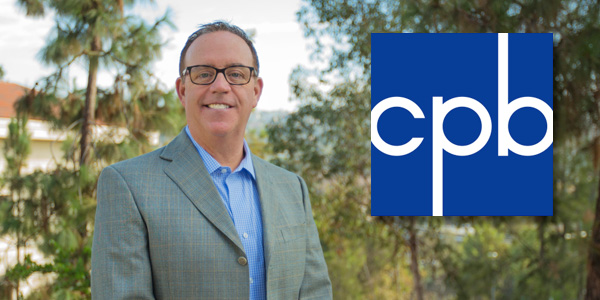
When the Corporation for Public Broadcasting (CPB) is looking to document the landscape of education-focused work across the country, San Diego State University’s Dr. James Marshall answers the call.
A professor and director of SDSU’s doctoral program in Pre K-12 educational leadership, Marshall has offered his expertise in educational technology, systems and program evaluation to CPB for the better part of two decades.
“My personal press for public media is that they need to be more needs-focused and outcome-driven,” says Marshall. “I am especially passionate about helping public media investigate, document and understand the ways it impacts learning. Education is a central tenet of the Public Broadcasting Act that established the Corporation for Public Broadcasting back in 1967.”
“My personal press for public media is that they need to be more needs-focused and outcome-driven,” says Marshall. “I am especially passionate about helping public media investigate, document and understand the ways it impacts learning. Education is a central tenet of the Public Broadcasting Act that established the Corporation for Public Broadcasting back in 1967.”
Marshall’s collaboration with CPB — a nonprofit organization that apportions federal funds to individual stations — began in 2004 when he was recruited to contribute to its Partnership for a Nation of Learners initiative, which aimed to forge impactful partnerships between public media, libraries and museums. Marshall designed learning experiences and support tools offered to public media outlets nationwide, helping to guide them in that direction.
Since then, he has spearheaded periodic CPB-sponsored studies to document how individual stations fulfill their educational missions.
“Almost all of my involvement has been related, in some way, to public media's shift from being more of a content displayer and provider, to being the true and responsive community asset that it aspires to be,” Marshall said.
Latest Findings
Marshall recently completed his latest project — a survey and needs assessment of the 160 public television stations and more than 400 public radio stations nationwide. The results will help individual stations better describe and present public media’s work to local stakeholders, while also helping CPB plot its future priorities within the education space.
What the latest data indicates is that the priorities Marshall has been continually encouraging public media toward— that needs-focused, outcome driven mantra — is finding an increasingly receptive audience. He found:
- 93 percent of television stations are targeting certain audiences through community partnerships
- 66 percent are regularly basing their efforts on needs assessment
- 62 percent are performing evaluations to determine impact and ensure equitable outcomes
Filling the COVID-19 Void
Marshall completed his report last April, mere weeks after the U.S. went into COVID-19 lockdown. With so much changing in the public media landscape because of the pandemic, he and his colleagues decided the study would be incomplete without collecting more data on how public media was stepping into the educational void left by school closures.
What they found in their COVID-19 addendum to the original study was especially riveting. Between March and July of 2020:
- 57 percent of joint television/radio stations developed a new partnership with a local education agency
- 58 percent developed a new partnership with a state agency
- 84 percent said they had access to partners they didn't have before COVID-19
